There are 6 main variants of the Airbus A300 family of aircraft. The A300-600 (A300B4) is one of them. Making things a bit more complicated is the fact that there are 6 sub-variants of just the 600/B4. It makes my head hurt just thinking about the entire lineup, but all you need to know is this:
What you’ll find below are my detailed side view templates of the A300-600. Not only the passenger version, but the freighter version as well.
Other versions will follow (if the pain ever goes away).
Side view templates of the Airbus A300-600 and A300-600F
Note: all of the aircraft illustrated below feature General Electric engines. The A300B4-600 was the most recent model built, and therefore, finding decent reference material was not so difficult. The GE engines seemed to be the most popular on these final airframes (as far as my non-scientific research could tell), so I just went with that.
Passenger version
The passenger version of this aircraft features three main boarding doors per side, along with one emergency exit located between doors number two and three.
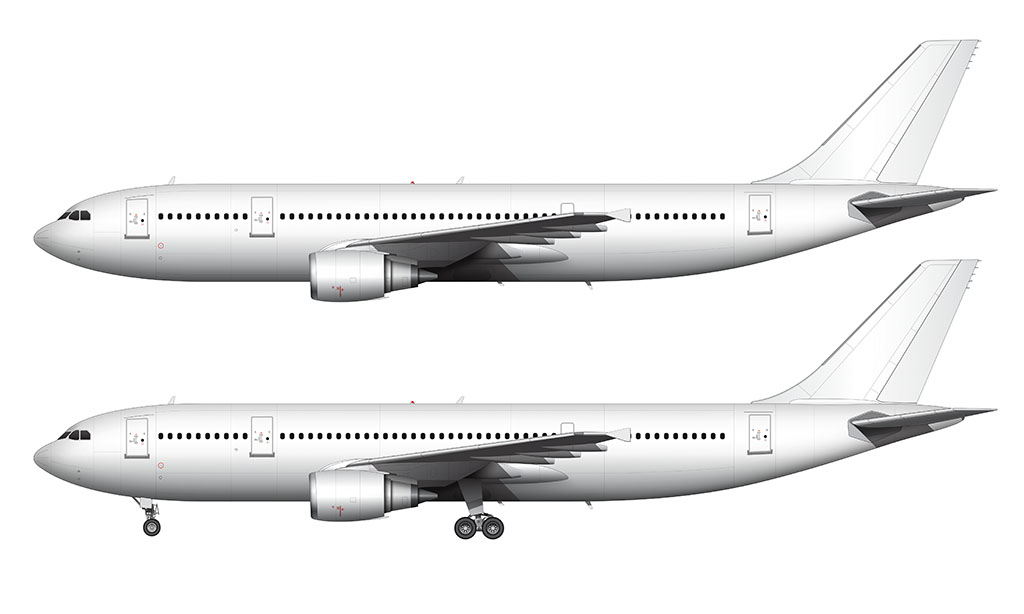
There are 10 windows between doors number one and two, 30 between door number two and the emergency exit, and 16 between the emergency exit and door number three. Doing the math, that’s 56 windows per side.
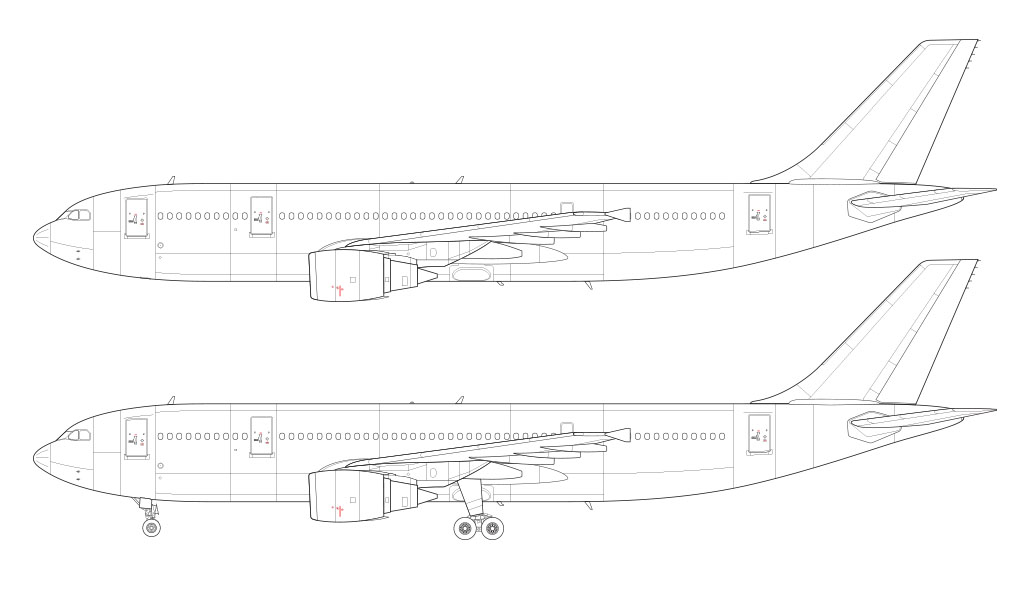
Freighter version
Other than a large cargo door located at the very front of the fuselage, are no structural differences between the passenger version and the freighter version. All but two of the windows were eliminated, as were boarding door two and the emergency exit. Apparently emergencies aren’t a thing on cargo aircraft?
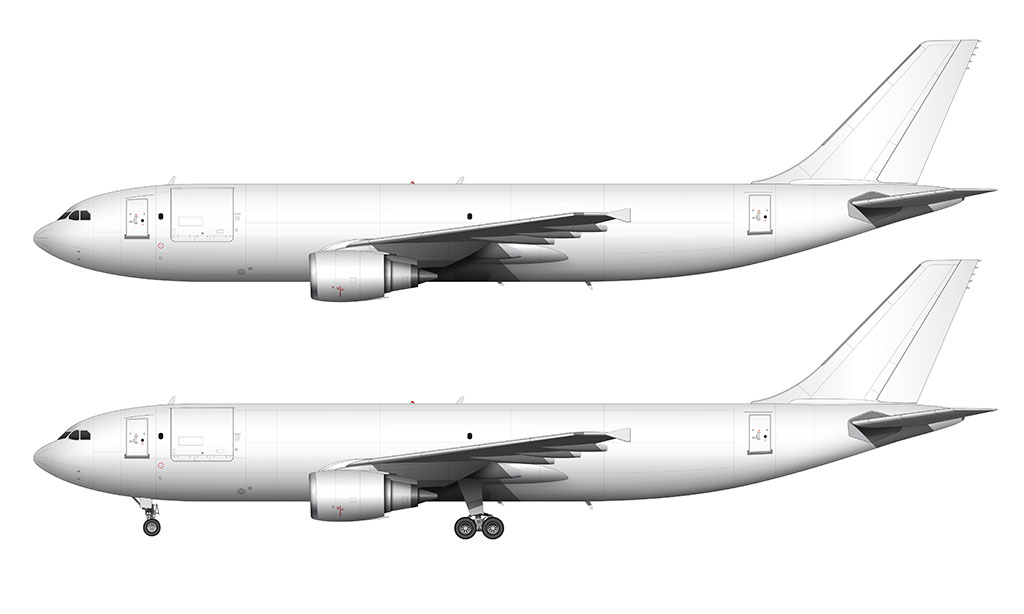
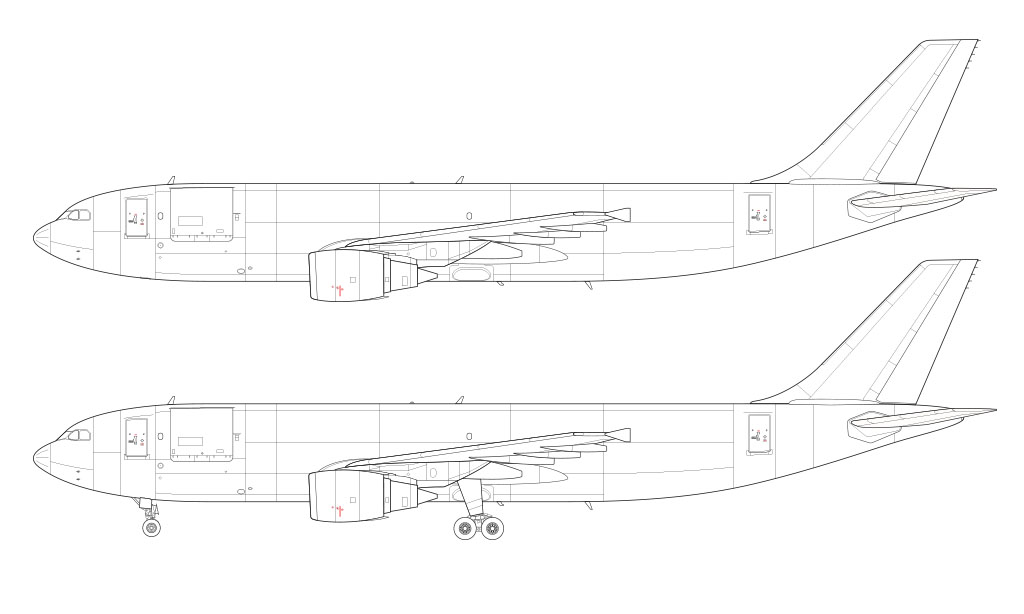
A brief history of the A300
Announced in 1969 and launched in 1974 with Air France, the A300 was especially significant in that it was the world’s first twin-engine widebody aircraft. Way back then, four-engined aircraft were the norm. I can only imagine how cutting-edge and advanced this design must have been. It was like nothing else at the time.
Here in modern times, the twin-engine widebody configuration is pretty much the de facto standard for medium to long haul aircraft. Airbus (and the entire aviation community) may not have known it at the time, but the A300 laid the groundwork for air travel as we know it today.
Visual differences between the A300 and A310
Compared to the A310 (the shorter-fuselage variant of the A300), it’s hard to tell the difference unless you’re looking at both side by side. The design language of both is distinctly “Airbus” with a pointy nose and raked vertical stabilizer. It’s kind of surprising to me that they weren’t categorized as the same family of aircraft.
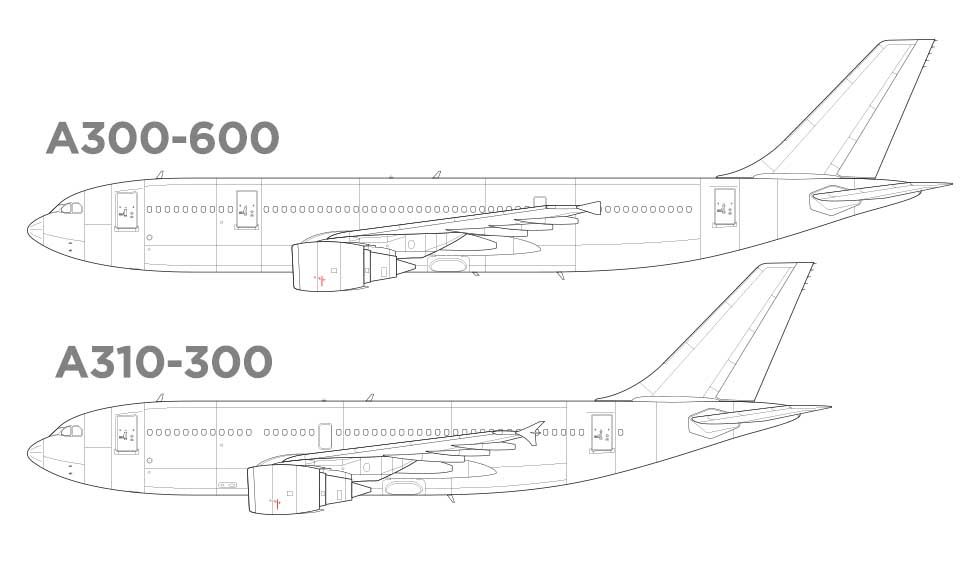
The only major differences:
- The A300 has a larger wing and a longer fuselage
- Not all A300s and A310s share the same tail section

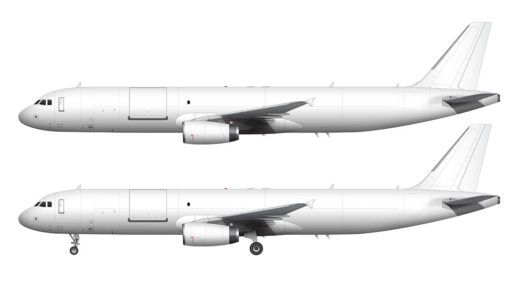
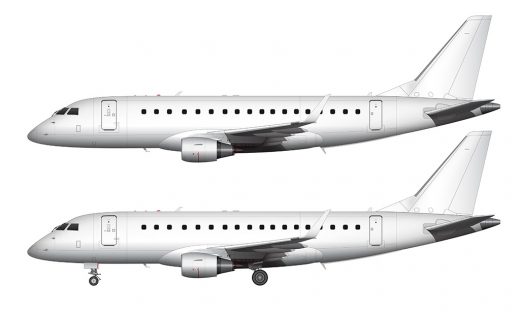
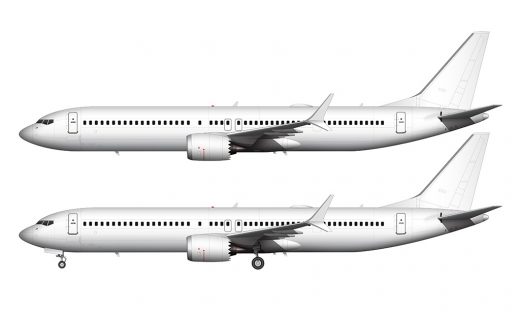
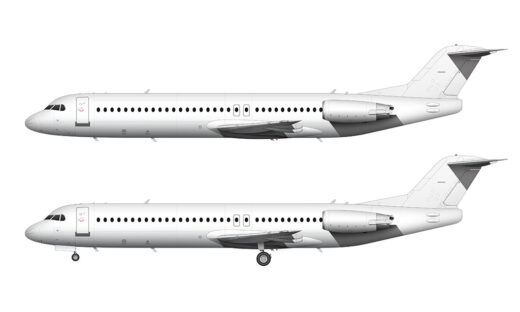
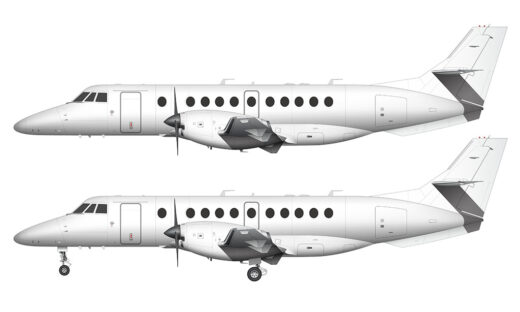
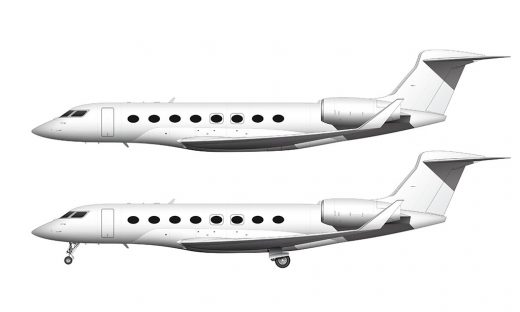
Wow nice job man and also do u think you can make the NASA 747 and the AN225 with space shuttles please I really needed that and good job on the MD-11 (MD-11F) have a good one Scott my friend
Thanks! I do believe that’s the first request ever had for the space shuttle. I will admit that sounds like fun. It’s pretty far down on my list of things to do though…
Hi Scott! Great job on the template! I would love to see the Airbus A321neo in the cabin flex configuration
Thanks Ryan! I seem to recall already doing that one – but maybe I didn’t? It makes my head hurt trying to keep track of all the different configurations lol.
Hello Scott, you already made one but labelled it as an A321LR, the LR and ACF are externally identical.
I can’t keep track of all of those lol
Please do the A321XLR
Also you can use the A321LR for A321neo cabin flex config since they’re almost identical
The next 747 cargo planes?
Yes! Maybe. 🙂 I’ve actually got to get started on my AN225 template though (the one that I’ve been promising forever). That might come first.
Pls make Tupolev Tu-144 pls
It would be nice to see a Boeing 777-8F cargo aircraft
That one is fairly high on my priority list, but unfortunately there’s not a whole lot of good reference material available for it yet. Hopefully soon!
Can you please add aqualantic airbus a300 600?
Definitely one of the most interesting requests I’ve received in a while! I had no idea what that was until I Googled it just now lol.
Norebbo, where is An-225? I’m really looking forward to it
Haven’t even had a chance to start on it yet! Been far too busy with other projects unfortunately.
And after the cargo, you can make some old ones, like DC-3, DC-6, Lockheed Constellation, Lockheed Model 10 Electra, Boeing 247 and Convair 340?
Other than the AN-225, the DC-3 is my highest requested aircraft at the moment. I’ll tackle that one after the Antonov!
Hey Scott, ya think you could make an Airbus A320-100? thanks.
How is it different than an A320-200? I’m guessing the differences are small, so it should be a fairly easy one for me to add to the collection.
Alright thanks, and I’m that guy who sent you airline liveries that i made from paint 3D if ya don’t remember a month ago.
I would also like to see the A300B2-200 and A300B4-200 versions. They have slightly different shaped General Electric engines and no wingtips.
Interesting. I actually had no idea there were A300s without wingtips.